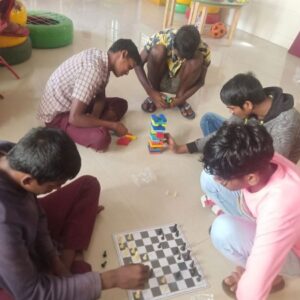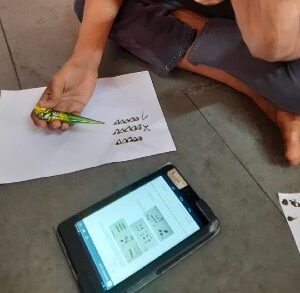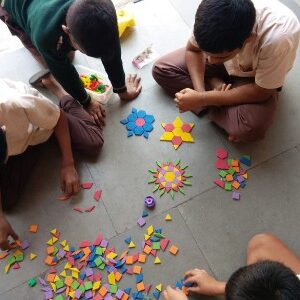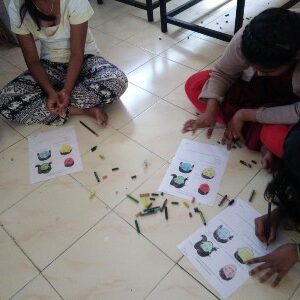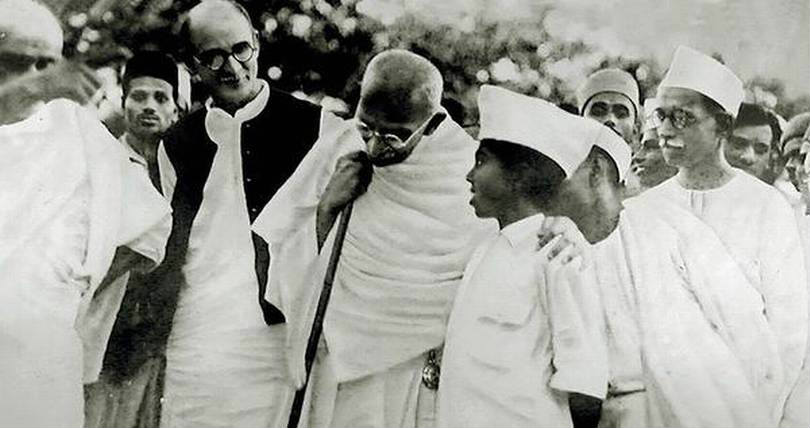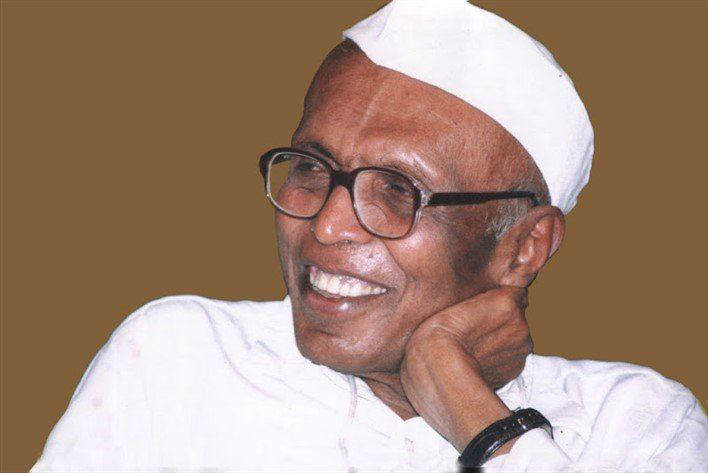ONCE YOU’VE HEARD THEIR STORY…
On March 26th, at the Boys’ Home, a loud cry was heard. Like a child weeping and wailing unconsolably. All the children stopped short in what they were doing and hurried to the room where the sound was coming from, crowding around the door. When they peered in, they were surprised to see all the adults in the room laughing, and their “house father” on the floor, pretending to cry like a child. Then a facilitator came up to them and clarified to them, “He’s only acting.” Bewildered the children left, unable to comprehend what was going on. Why were adults acting like children?
What the children didn’t realise is that this was a special day at the Child Care Institution (CCI) where Headstreams was conducting a CCI Staff Workshop. The theme of the session was “Caregiving”. Together we facilitators and the staff at the Home were looking at the meaning of caregiving and how it looked in practice, through games, sharing and role playing.
After a fun introductory activity of juggle catch, we dwelt at length on how we experienced being cared for as children. One of the common experiences was returning home hungry from school, and finding a parent ready with food to feed you. Another was being comforted when we cried. We were given a chance to role play this (and so the wailing the children heard!). Then we shared how we received caring in our lives now, as adults, and from whom.
Naveen, our session facilitator, then introduced concept of the five languages of love: Everyone experiences care differently. For some being cared for means receiving gifts; for some it is being verbally affirmed; for still others it is through physical touch. A fourth category are those people who experience receiving care when we spend time with them, and the last category is of people who sense being cared for when we do an act of service for them.
From there we moved onto reflecting on how we are as caregivers. Who do we give care to? How do we give care? How do we give care to the children at the Home?
It was touching when one of the staff talked about how on waking in the morning he comes with a resolve to have a fun day with the children, but how that hope gets thwarted by time-consuming administrative duties. Another poignant moment of vulnerability was when one confessed that sometimes, in spite of trying hard, patience comes to an end and anger bursts out against the children. He wished it wasn’t so.
What was palpable by the end of the session was the change in our own perception of the staff. You see, very often, we tended to see one another as adversaries. After this session, we realised it is mostly because we don’t know each other. Fred Rogers had said, “Frankly, there isn’t anyone you couldn’t learn to love once you’ve heard their story”. And that is how it was with us. We had heard each other’s stories of care receiving, glimpsed each other’s vulnerabilities, as children and as adults, and become privy to each other’s struggles of caregiving… and there was no turning back from that now. Each face and name, now had a history attached to it. We had become human to each other. We had seen how alike we actually are, at the core of it. It is still a long journey ahead but now it feels like a conversation between friends.
WHEN SHAH RUKH KHAN VISITED!
They asked, curious and eager, “Nimma hessaru aenu?” (What is your name? in Kannada)
The stranger replied, “Shah Rukh Khan.”
Some of the 50 boys present giggled. Others looked a bit confused (should they believe this stranger or not? He definitely did not look like Shah Rukh Khan!!!).
Mr. V. put them out of their misery. “I am not Shah Rukh Khan,” he said. Introducing himself, he said he had come to visit them. Several more giggles later, the stranger had turned into friendly visitor.
A flurry of queries rained on Mr. V. for a whole hour: “Are you married? How many children do you have? Where do you stay? What do you do?” And of course, the list of favourites – food, car, colour… The boys went on and on quizzing Mr.V. and getting to know him, . Mr.V. also showed them some pictures he had brought with him – of his family, the places he had visited, the games he plays. When they heard that Mr.V. had lived in Chitradurga as a child, the boys turned in unison to one usually quiet 12-year-old, who stood up with alacrity grinning from ear to ear: “I am also from Chitradurga,” he said.

Mr. V. asked them questions too. “What do you want to become when you grow up?” he asked. Hands shot up as boy after boy shared their dreams: “military”, “police”, software engineer”, “doctor”, “farmer”, “take care of my parents”, “police”, “police”, police”… As dream declarations tumbled forward, Mr. V. said, “Do you know what helped me to achieve what I wanted? Setting goals.” He entreated the boys to set goals and work towards them. “Set small goals and achieve them one by one,” he emphasized. Working methodically helps one realise dreams he said.
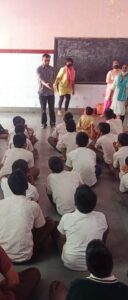 The first empathy point was when Mr.V. averred, “I didn’t like reading books to study.” And many boys nodded their heads in agreement, with a couple of “Me too”s. Another little anecdote that resonated with the boys was when Mr. V. narrated how he one day had been faced with a choice. “When I was a little boy,” Mr.V. said, “some boys had bullied me and I had to decide then whether I would retaliate and seek revenge, or choose to ignore the bullies and maintain a dignified silence.” Mr. V. said that if, on that day, he had chosen “revenge”, he may have been a bully himself today and that the future that unfolded for him would have been very different. Instead he had chosen to remain patient and not react, and that helped him to practise self-control, which rewarded him greatly later on, making him a more patient person. Choices are important, Mr.V. said. It is the one thing we have control over.
The first empathy point was when Mr.V. averred, “I didn’t like reading books to study.” And many boys nodded their heads in agreement, with a couple of “Me too”s. Another little anecdote that resonated with the boys was when Mr. V. narrated how he one day had been faced with a choice. “When I was a little boy,” Mr.V. said, “some boys had bullied me and I had to decide then whether I would retaliate and seek revenge, or choose to ignore the bullies and maintain a dignified silence.” Mr. V. said that if, on that day, he had chosen “revenge”, he may have been a bully himself today and that the future that unfolded for him would have been very different. Instead he had chosen to remain patient and not react, and that helped him to practise self-control, which rewarded him greatly later on, making him a more patient person. Choices are important, Mr.V. said. It is the one thing we have control over.
For us headstreams facilitators, as we watched the interaction between Mr.V. and the boys, for just that hour, the dingy dark paint-peeling room and their circumstances seemed forgotten. For a whole hour, these boys who are usually so restless and can hardly stay put, listened with complete concentration. Their minds seemed open, looking into possible futures, listening raptly to a glimpse of what else could be possible.
It reinforced for us how secluded life within a CCI can get, and how important it is that the children in these institutions have access to people and experiences outside of their four walls. Looking through the eyes of people with experiences different from theirs, can help to gain perspective and infuse hope.
THE PROBLEM OF ASHOK
Ashok* was angry and tired. Once again the police had appeared at his home to take him away. This was the third time in the last four years, that he had been summarily carted away. He had to leave his family, his friends and other parts of his life all of a sudden again. Worse, everyone would begin whispering about him again. For the third time.
There had been three cases of robbery against Ashok. Two of them had been cleared so far. The third was pending. And while he awaited trial, once again he was put in that dreaded Observation Home. He hated that place. It was like a jail. Cooped up in one room with a dozen other boys. He first came there as a child. Now he wasn’t even legally a child any more. But there he was again, facing the deadening routine of doing nothing all day.
While Ashok was at the Home, our experienced facilitators from Headstreams found it hard to conduct our regular sessions. Ashok was constantly restless. He could not settle down to doing any activity. He would bully the boys loudly, and the other boys seemed to fear him enough to listen to him. It seemed like he was hitting them and ridiculing them when we were not around. Even we had to stay on high alert to prevent instances of physical fights
breaking out or boys getting verbally abused. If any boy showed an interest in doing the activities of the session, Ashok would try his best to stop him from doing it one way or another.
How can we address this, we wondered? How can we protect the other boys and help Ashok at the same time? We realized that the first step was to look at Ashok not as a problem to be done away with. Ashok was a person who had been picked up from his life summarily and was being judged for a crime he may or may not have committed. Ashok was feeling so insecure that he needed constant attention, feeling so out of control of his life that he needed to be obeyed to feel powerful and in control. We also noted that Ashok had been more amenable in the two weeks before this particular week. Though he had still been loud, he had also been open and cooperative. He had been more responsive to the rules of the space. This helped us understand that his loud bullying this week had probably been triggered by something that had happened, or something someone had said. And though we didn’t know what this was, we were able to shift our thinking.
We realized that the Ashok we saw here, was only one part of who he was. We accepted that his behaviour here did not define who Ashok really could be.
Thinking in this manner, helped us to view Ashok in a more humane light. We decided that we wanted Ashok to experience kindness and non-judgement. When he left, we wanted for him to leave with a memory of a time and people who treated him with respect. So we continued speaking to him kindly but firmly, refusing to be provoked to anger while stepping in to protect the others the best we could.
This week Ashok was awarded bail and so was able to leave the Home. We will miss him because of what he reminded us: People are not problems; people are hurting and need help. We met Ashok as part of our project “Play and Learning”. Through this, we work in the short-stay institutions set up under the Juvenile Justice Act, to help house children (those below 18 years of age) who enter the judicial system for a number of reasons. Our work at the State Government-run Child Care Institutions (CCIs) in Bengaluru is extremely challenging but hugely rewarding at the same time.
